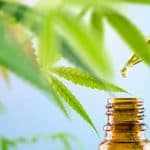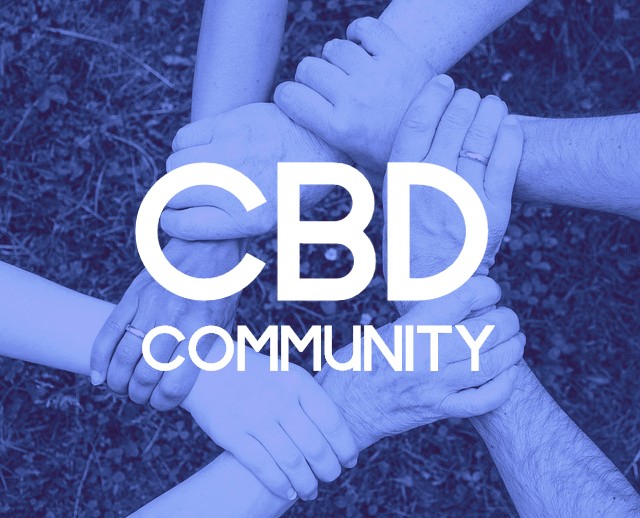Last updated on 16 November 2021
Introduction
CBDA is the abbreviation for Cannabidiolic Acid, the phytocannabinoid found in raw hemp and marijuana plants.
CBD is the acronym for Cannabidiol, the decarboxylated form of CBDA. We are familiar with its non-psychoactive properties and its extensive applicability in all aspects of lifestyle.
This article aims to deep dive into understanding the lesser-known cannabinoid (CBDA) compared with the most celebrated compound (CBD). The intention is to expand our knowledge about the cannabis plant that could help us to steer clear from speculative theories.
CBDA Vs CBD – A quick overview
| Property | CBDA | CBD |
| Cannabinoid | Naturally occurring Phytocannabinoid-Precursor to CBD | Naturally occurring. |
| Bio-synthesis | Gets converted from its mother cannabinoid – CBGA | CBDA decarboxylase into CBD ( due to heat, light, and time) |
| Psychoactivity | Non-psychoactive | Non-psychoactive |
| Benefits | Potential Therapeutic value: Preliminary research stage | Extensive Therapeutic value |
| Availability | Cannabis Sativa, Hemp strains | Cannabis Sativa, Hemp strains |
| Molecular structure | C22H30O4 | C21H30O2 |
| Interaction with ECS | Does not interact with ECS, but with serotonin receptors | CBD travels through multiple molecular pathways |
Background of CBDA
In the post THCA vs THC, the stages of biosynthesis of cannabinoids were briefly discussed.
That is, CBGA (cannabigerolic acid) is the mother compound of the three primary cannabinoids CBC, THC, CBD. Beginning their lifecycle as CBGA, the effect of heat, light, time, and enzymatic reactions converts it into CBCA, THCA, and CBDA.
Progressive efforts are now getting directed towards publishing more findings on individual cannabinoids as research on them is in progress.
Where is CBDA found?
The acidic forms of CBGA, including CBDA, THCA, and CBCA, remain in their acidic structure in the plant until they are harvested or decarboxylated.
But where is CBDA? How can it be isolated?
A recent study1 details out that Cannabidiolic acid is the most prominent compound present in hemp seed oil.
The growing interest in these lesser-known cannabinoids has led to studies that are progressing towards deriving its isolated and purified forms.
Hence this study proposes to recover CBDA from the hemp pollen of Industrial hemp cultivars. Moreover, it recommends the need for combined, alternative processing techniques. It could help obtain improved quantities of CBDA from two different sources: hemp seed oil and hemp pollen or also from its by-products and wastes.
Role of CBDA in the endocannabinoid system
CBDA, unlike most phytocannabinoids, does not interact with the endocannabinoid system. It exerts most of its therapeutic effects by interacting with the serotonin system. Serotonin is a neurotransmitter that is found in the brain and it is involved in the regulation of moods, sleep, social behavior, appetite, sleep, sexual desire, and memory.
Having said that, CBDA’s mechanism of action is still under investigation. Like CBD, CBDA likely exerts its effects through numerous other pathways.
The 2018 study2 reports that CBDA can enhance the activation of the 5HT1A* receptor in rats and humans.
* 5HT1A is a subtype of serotonin receptor. It is a neurotransmitter expressed in the brain, spleen, and neonatal kidney.
Medical benefits of CBDA
While the medical, therapeutic benefits of CBD are well identified and discussed, knowledge of CBDA is limited. However, available studies so far are pointing out its future potential in pharmacology.
The medical benefits of CBDA can be interpreted in two ways.
Firstly, we have understood that CBDA (unlike other phytocannabinoids) does not interact with the endocannabinoid system. Hence it is considered to be pharmacologically inactive.
Secondly, research asserts that CBDA uses different mechanisms to trigger therapeutic effects.
- In a 2015 rodent model study3 the combined doses of THC: CBDA reported to be an effective treatment for acute nausea. At the same time, CBDA at the highest dosage did not impair locomotor activity, unlike THC.
- Similarly, the 2016 Study4 highlights the clinical efficacy of CBDA in treating Anticipatory nausea (AN) in pre-clinical models.
Efficacy in AB is an important finding to support the current pharmacotherapy for chemotherapy patients. Because reports claim that AN is reported to have a poorly managed condition. The side effects experienced by Current pharmacology are restricted to prescribing benzodiazepine, although their limited efficacy, sedative effects, and high abuse potential are known.
Therefore the non-psychoactive, sedative side effect free profile of CBDA justifies itself as a novel AN treatment.
- Also, a reference about CBDA’s potential to inhibit breast cancer cell migration is reported by a 2017 study.5 CBDA inhibits the migration of breast cancer cells in humans due to its highly aggressive nature.
- Despite some promising therapeutic potential of CBDA, reference from the 2018 study6 points out the instability of CBDA in developing it as a medicine. This is because heat exposure weakens CBDA.
Therefore, a more stable analogue similar to the biological profile of CBDA with its methyl ester was compared. The results revealed that the effects produced by HU-580 are more potent in treating acute nausea.
- Other benefits of CBDA include inhibition of enzymes in the endocannabinoid system, TRPV1 activation, and cyclooxygenase (COX) inhibition.
How to consume CBDA?
Consuming CBDA is straightforward. If you are tolerant and used to earthy raw plant tastes, you would like it.
- Raw leaves from freshly harvested hemp plants can be juiced to be consumed like a separate drink or infused with any other suitable fruit.
- Use cannabis leaves in a salad, pasta, pizza, or sandwich.
- Generously use for garnish.
- Innovate new combinations and make your own edibles
If you have more ideas, do share your comments in the message box below.
What is CBD?
Cannabidiol is one of the primary non-psychoactive phytocannabinoid. It is one among hundreds of other cannabinoids that is naturally present in Cannabis Sativa plants.
Tetrahydrocannabinol (THC) and Cannabidiol ( CBD) are the two compounds found in the highest concentrations.
Initially, it was thought that CBD is responsible for psychotropic effects.
Read about the basics of CBD in our previous posts.
Where is it found?
The various parts of the cannabis plant contain cannabinoids. The entire plant is medicinal and used in extractions of many other compounds.
A 2012 study7 refers to capitate stalked glandular hairs or trichomes, which is the storehouse for the major cannabinoids. These are isolated during their flowering period at eight weeks. At this stage, Tetrahydrocannabinolic acid (THCA), Cannabidiolic acid ( CBDA), and Cannabigerolic acid ( CBGA) were abundantly identified.
We are now familiar that CBDA and THCA are the acidic precursors of the compounds CBD and THC.
CBD is available in different forms for consumption that include oil, paste, tinctures, capsules, liquids, gummies, etc. The list is getting taller with more innovative applications to incorporate CBD in all aspects of lifestyle.
Medical benefits of CBD
From chronic pain to epilepsy to everyday lifestyle the applicability of CBD is increasing worldwide.
There are numerous therapeutic benefits that CBD offers to humans and animals. Several factors are contributing to the swift growth in the cannabis industry.
They include scientific research, anecdotal evidence, positive reports from patients who are benefitting from medical cannabis, demand for alternative natural medicines, Investments from pharmaceutical and nutraceutical companies, and more.
Furthermore, research8 asserts that CBD has a good safety profile, with mild side effects in animal and human studies. Also, the non-psychoactive nature of CBD limits the abuse possibility hence qualifies for therapeutic applications.
Some of the notable medical benefits of CBD are:
- Effective treatment for substance use disorder
- Anticonvulsant properties
- A possible role in refractory epilepsy, however, studies are inconclusive in animal models.
- Neuroprotective and anti-inflammatory effects
- There are reports9 on its potential in treating neuropsychiatric disorders. Such as anxiety, schizophrenia, and addiction.
- Similarly another report10 concludes about its analgesic, anti-inflammatory and anti-cancer effects.
- A recent study11 summarizes newest findings in the effectiveness of CBD in pain management and pain-related diseases. Not to miss out to keep in mind the dosage and route of administration.
Conclusion
- CBD and CBDA have similar biological properties. Still, their therapeutic effects are diverse.
- There is an overwhelming amount of data and anecdotal evidence on the various properties of CBD. However, concluding their pharmacodynamics and pharmacokinetics is still a challenge.
- Expanding our understanding of individual cannabinoids motivates us to make the best use of the knowledge and apply it in life practice.
References
- Formato M, Crescente G, Scognamiglio M, et al. (‒)-Cannabidiolic Acid, a Still Overlooked Bioactive Compound: An Introductory Review and Preliminary Research. Molecules. 2020;25(11):2638. Published 2020 Jun 5. doi:10.3390/molecules25112638 [↩]
- Pertwee, R. G., Rock, E. M., Guenther, K., Limebeer, C. L., Stevenson, L. A., Haj, C., Smoum, R., Parker, L. A., and Mechoulam, R. (2018) Cannabidiolic acid methyl ester, a stable synthetic analog of cannabidiolic acid, can produce 5‐HT1A receptor‐mediated suppression of nausea and anxiety in rats. British Journal of Pharmacology, 175: 100– 112. doi: 10.1111/bph.14073 [↩]
- Rock, E.M., Limebeer, C.L. & Parker, L.A. Effect of combined doses of Δ9-tetrahydrocannabinol (THC) and cannabidiolic acid (CBDA) on acute and anticipatory nausea using rat (Sprague- Dawley) models of conditioned gaping. Psychopharmacology 232, 4445–4454 (2015). https://doi.org/10.1007/s00213-015-4080-1 [↩]
- Brierley DI, Samuels J, Duncan M, Whalley BJ, Williams CM. Neuromotor tolerability and behavioural characterisation of cannabidiolic acid, a phytocannabinoid with therapeutic potential for anticipatory nausea. Psychopharmacology (Berl). 2016;233(2):243-254.doi:10.1007/s00213-015-4100-1 [↩]
- Takeda S, Himeno T, Kakizoe K, et al. Cannabidiolic acid-mediated selective down-regulation of c-fos in highly aggressive breast cancer MDA-MB-231 cells: possible involvement of its down-regulation in the abrogation of aggressiveness. Journal of Natural Medicines. 2017 Jan;71(1):286-291. DOI:10.1007/s11418-016-1030-0 [↩]
- Pertwee, R. G., Rock, E. M., Guenther, K., Limebeer, C. L., Stevenson, L. A., Haj, C., Smoum, R., Parker, L. A., and Mechoulam, R. (2018) Cannabidiolic acid methyl ester, a stable synthetic analog of cannabidiolic acid, can produce 5‐HT1A receptor‐mediated suppression of nausea and anxiety in rats. British Journal of Pharmacology, 175: 100– 112. doi: 10.1111/bph.14073 [↩]
- Happyana, Nizar & Agnolet, Sara & Muntendam, Remco & Dam, Annie & Schneider, Bernd & Kayser, Oliver. (2012). Analysis of cannabinoids in laser-microdissected trichomes of medicinal Cannabis sativa using LCMS and cryogenic NMR. Phytochemistry. 87. 10.1016/j.phytochem.2012.11.001 [↩]
- Chye Y, Christensen E, Solowij N, Yücel M. The Endocannabinoid System and Cannabidiol’s Promise for the Treatment of Substance Use Disorder. Front Psychiatry. 2019;10:63. Published 2019 Feb 19. doi:10.3389/fpsyt.2019.00063 [↩]
- Devinsky O, Cilio MR, Cross H, et al. Cannabidiol: pharmacology and potential therapeutic role in epilepsy and other neuropsychiatric disorders. Epilepsia. 2014;55(6):791-802. doi:10.1111/epi.12631 [↩]
- De Petrocellis L, Ligresti A, Moriello AS, et al. Effects of cannabinoids and cannabinoid-enriched Cannabis extracts on TRP channels and endocannabinoid metabolic enzymes. Br J Pharmacol. 2011;163(7):1479-1494. doi:10.1111/j.1476-5381.2010.01166.x [↩]
- Most J, Bryk M, Starowicz K. Cannabidiol for Pain Treatment: Focus on Pharmacology and Mechanism of Action. Int J Mol Sci. 2020;21(22):8870. Published 2020 Nov 23. doi:10.3390/ijms21228870 [↩]
Author
With close to two decades of successful stint in the Media industry, I felt I was surely missing a piece in my life puzzle. I took a break and set out to seek the purpose of my life. I travelled, lived out of a suitcase, let things flow into life without resisting, and after five challenging years, I found my rhythm. I love to write about Cannabis and Health and try my best to simplify esoteric concepts into simple ideas for life.







